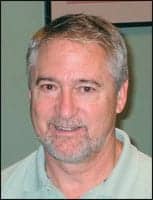Scientists at the University of Southampton in England have found that people who have good bilateral high-frequency hearing can use echoes to determine the position of objects via echolocation, in much the same way that bats and dolphins do. According to a study article published in the May 2015 edition of the journal Hearing Research, scientists from the University of Southampton’s Institute of Sound and Vibration Research (ISVR) found that locating an object by listening to echoes, without moving the head, requires good hearing at high frequencies in both ears.
The same research team published a 2013 paper in which demonstrated that some sighted and blind people can use echoes in this way, though it wasn’t clear until now that having good high-frequency hearing on both sides is crucial to this ability.
“We know that hearing echoes is very important in daily life for some blind people,” said lead study author Daniel Rowan, PhD, University of Southampton. “Hearing loss, such as associated with getting older, usually reduces hearing at high frequencies in both ears. Some people can develop deafness in one ear. We wanted to get some insight into how much those particular forms of hearing loss might affect users of echoes to locate objects: our results suggest they would struggle.”
According to a recent announcement, the research team conducted a series of experiments with both sighted and blind people. Participants were asked if an object was to the left or right of them. The experiment used a “virtual auditory space” technique originally created in ISVR’s anechoic chamber, said to be one of the quietest places on Earth, that was reproduced for the participants via special earphones. This method allowed the researchers to remove audio and non-audio clues to the location of the object that were unrelated to echoes, such as the sounds and air movement associated with the position of an object.
The researchers reportedly manipulated the sounds in various ways, simulating high-frequency hearing loss and single-sided deafness. They also ensured that study participants were not finding ways to use the echoes with only one ear. The researchers found that participants could locate an object accurately only if they had good high-frequency hearing in both ears.
“Hearing aid services tend to focus on how well a person can hear speech,” said Rowan. “Our research indicates that those services also need to take into account whether someone needs to hear echoes in their daily life.” Rowan explained that a person who relies on some echolocation might need hearing aids in both ears, despite the fact that people are often only fitted for one hearing aid.
The current study is being extended to an investigation of how objects are detected using head movement to improve the localization of objects. Read about another University of Southampton study that The Hearing Review covered in this November 2014 article.
Source: University of Southampton, Hearing Research
Photo credit: Reproduction of the University of Southampton experiment conducted in the ISVR anechoic chamber (Photo courtesy of University of Southampton.)




